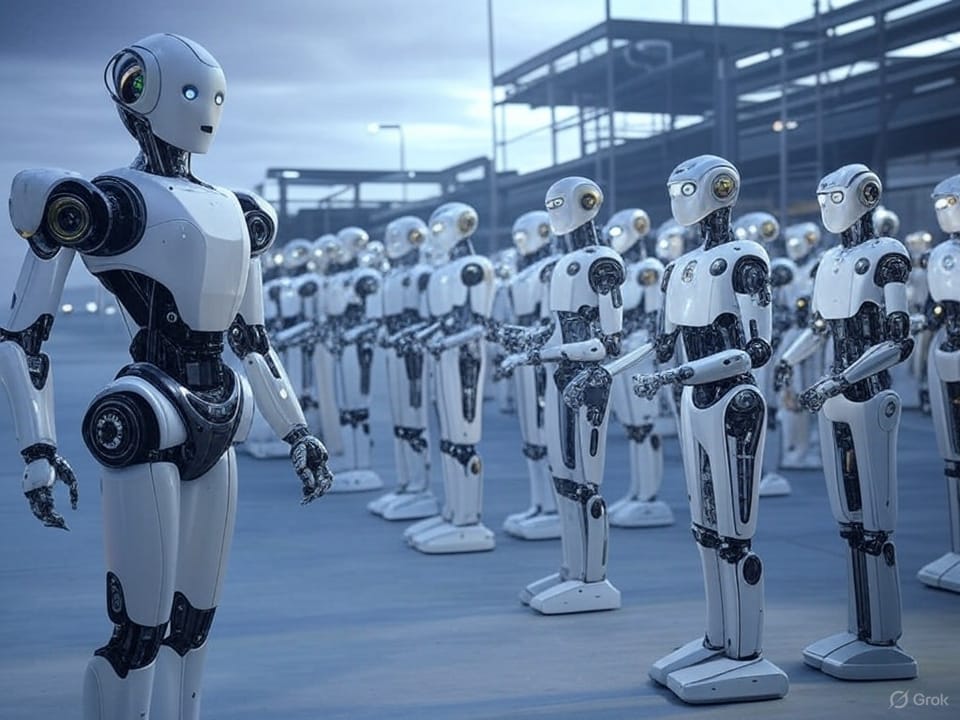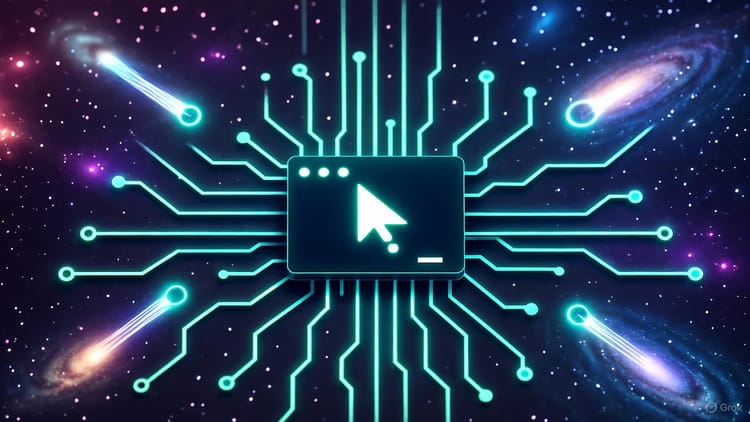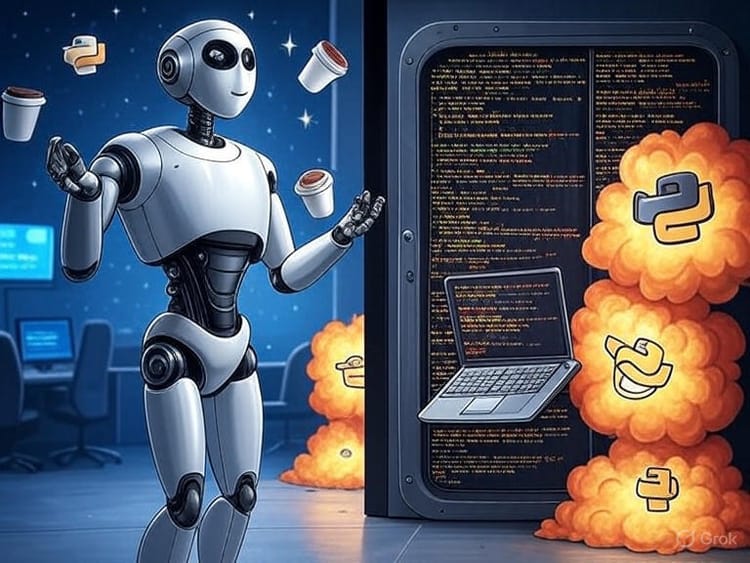AI Agents vs. AI Workflows: Understanding the Differences and When to Use Each

Artificial Intelligence (AI) is transforming how businesses and individuals approach problem-solving, automation, and decision-making. Two key concepts in this space are AI Agents and AI Workflows. While they may seem similar, they serve distinct purposes and are suited for different scenarios. In this blog post, we’ll explore the differences between AI Agents and AI Workflows, their use cases, and when to choose one over the other. We’ll also provide practical examples and visual diagrams to illustrate their applications.
What Are AI Agents?
AI Agents are autonomous entities powered by AI that can perceive their environment, make decisions, and take actions to achieve specific goals. They are designed to operate independently or semi-independently, often leveraging machine learning models, natural language processing (NLP), or reinforcement learning to adapt to dynamic conditions.
Key Characteristics of AI Agents:
- Autonomy: AI Agents can make decisions without constant human intervention.
- Goal-Oriented: They are designed to achieve specific objectives, such as optimizing a process or solving a problem.
- Adaptability: They learn from their environment and improve over time.
- Interactivity: They often interact with users, systems, or other agents.
Example Use Case: Customer Support Chatbot
An AI Agent in the form of a chatbot handles customer inquiries. It interprets user queries, retrieves relevant information, and responds in natural language. If the query is complex, the agent may escalate the issue to a human operator or another AI Agent.
[Customer] --> [AI Agent: Chatbot]
|
v
[Process Query]
|
v
[Retrieve Data or Escalate]
|
v
[Respond or Transfer]
Figure 1: AI Agent workflow for a customer support chatbot.
What Are AI Workflows?
AI Workflows are structured sequences of tasks or processes that incorporate AI to automate or enhance specific steps. Unlike AI Agents, workflows are not autonomous; they follow predefined rules, pipelines, or logic to execute tasks in a coordinated manner. AI Workflows are often used to streamline repetitive or data-intensive processes.
Key Characteristics of AI Workflows:
- Structured: Follows a fixed sequence of steps or a predefined pipeline.
- Task-Oriented: Focuses on completing a series of tasks efficiently.
- Integration: Combines AI with other tools, APIs, or human inputs.
- Predictability: Produces consistent outputs based on inputs and rules.
Example Use Case: Document Processing Pipeline
An AI Workflow for document processing might involve extracting text from scanned documents, categorizing them using an AI model, and storing the results in a database. Each step is predefined, and the workflow ensures all documents are processed systematically.
[Scanned Document] --> [Step 1: OCR Extraction]
|
v
[Step 2: AI Categorization]
|
v
[Step 3: Store in Database]
|
v
[Output: Processed Data]
Figure 2: AI Workflow for document processing.
Key Differences Between AI Agents and AI Workflows
| Aspect | AI Agents | AI Workflows |
|---|---|---|
| Autonomy | High; operates independently with decision-making capabilities. | Low; follows predefined steps with minimal decision-making. |
| Structure | Flexible; adapts to dynamic environments. | Rigid; follows a fixed sequence of tasks. |
| Goal | Achieves broader objectives through reasoning and learning. | Completes specific tasks or processes efficiently. |
| Interactivity | Interacts with users, systems, or other agents in real-time. | Limited interaction; focuses on task execution. |
| Adaptability | Learns and improves over time based on feedback or data. | Static; changes require manual reconfiguration. |
| Complexity | Handles complex, unpredictable scenarios. | Suited for repetitive, predictable tasks. |
When to Use AI Agents
AI Agents are ideal for scenarios that require autonomy, adaptability, and real-time decision-making. Use AI Agents when:
- The environment is dynamic or unpredictable.
- The system needs to learn and improve over time.
- Interaction with users or other systems is frequent.
- The goal is broad and requires reasoning or multi-step problem-solving.
Example: Autonomous Trading Bot
An AI Agent for stock trading monitors market data, predicts price movements using machine learning, and executes trades based on predefined risk thresholds. It adapts to market volatility and learns from past trades to optimize its strategy.
Use Case Details:
- Input: Real-time market data, historical trends.
- Processing: AI model predicts price movements; agent decides to buy, sell, or hold.
- Output: Trade execution or portfolio adjustment.
[Market Data] --> [AI Agent: Trading Bot]
|
v
[Analyze Trends & Predict]
|
v
[Decide: Buy/Sell/Hold]
|
v
[Execute Trade]
Figure 3: AI Agent for autonomous trading.
When to Use AI Workflows
AI Workflows are best suited for structured, repetitive tasks that require consistency and efficiency. Use AI Workflows when:
- The process is well-defined with clear steps.
- The tasks are repetitive or data-intensive.
- Integration with other tools or systems is necessary.
- Predictable outputs are critical.
Example: Email Marketing Automation
An AI Workflow for email marketing might involve segmenting customers based on behavior, generating personalized email content using an AI model, and scheduling delivery. Each step is predefined, ensuring consistent execution.
Use Case Details:
- Input: Customer data, campaign parameters.
- Processing: AI segments customers and generates content; workflow schedules emails.
- Output: Sent emails with performance metrics.
[Customer Data] --> [Step 1: Segment Customers]
|
v
[Step 2: Generate Email Content]
|
v
[Step 3: Schedule & Send Emails]
|
v
[Output: Campaign Metrics]
Figure 4: AI Workflow for email marketing automation.
Combining AI Agents and AI Workflows
In some cases, AI Agents and AI Workflows can work together to create powerful systems. For example:
- An AI Agent could oversee a customer service operation, deciding whether to handle a query itself or trigger an AI Workflow to process a refund.
- An AI Workflow could preprocess data (e.g., cleaning and structuring) before passing it to an AI Agent for decision-making, such as in fraud detection.
Example: Fraud Detection System
- AI Workflow: Preprocesses transaction data (e.g., extracting features, flagging anomalies).
- AI Agent: Analyzes flagged transactions, decides whether to approve, deny, or escalate for human review.
[Transaction Data] --> [AI Workflow: Preprocess Data]
|
v
[AI Agent: Analyze & Decide]
|
v
[Output: Approve/Deny/Escalate]
Figure 5: Combined AI Agent and Workflow for fraud detection.
Conclusion
AI Agents and AI Workflows are powerful tools in the AI ecosystem, each with unique strengths. AI Agents excel in autonomous, adaptive, and interactive scenarios, such as chatbots or trading bots, where decision-making and learning are critical. AI Workflows are ideal for structured, repetitive tasks, such as document processing or email marketing, where consistency and efficiency are paramount.
When choosing between the two, consider the nature of your problem:
- For dynamic, goal-oriented tasks with real-time interactions, opt for an AI Agent.
- For predictable, process-driven tasks with clear steps, choose an AI Workflow.
- For complex systems, combine both to leverage their complementary strengths.
By understanding the differences and applying the right tool to the right problem, you can unlock the full potential of AI to drive innovation and efficiency.


